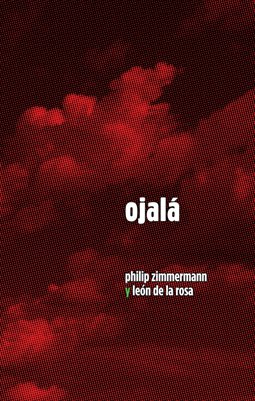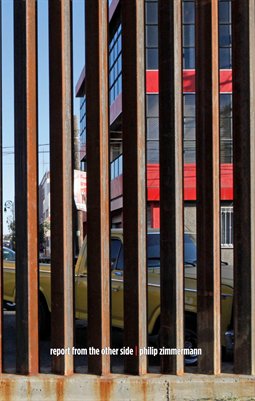The New York Public Library is well known for it's many speaker series, and they cover many topics and include speakers from the worlds of politics, culture, the visual arts, music and literature. I have been to many of them over the years including some memorable ones like Ed Ruscha and Matthew Barney. On May 22nd at 6:30, Tony White, Associate Chief Librarian at the Metropolitan Museum of Art, has put together an interesting panel for the NYPL. It is called "Women in a Golden Age of Artists' Books". The link is here.The subtitle of the program is: Three Women who were pivotal in the development of offset-printed artists' books discuss the past present, and future of the unique visual form and transformative medium.
The three women who were selected to talk with Tony, are Cynthia Marsh, Rebecca Michaels and Patty Smith. All three women have impeccable credentials as important role models for empowering women artists to be able to run offset lithographic presses. Offset presses are among the hardest printing tools to learn how to run. They are exceptionally complicated, take years to learn how to run really well, and they are intimidating to just about anyone. There are very few women who have historically run offset presses, and Cindy, Rebecca and Patty were all exceptionally good at it. They influenced others to use the medium for their printmaking and book production. I say "were" because I don't think any of them use offset anymore, due to various changes in their professional lives, and lack of access to offset presses. Patty might be an exception. This is a common problem for all of us who have used offset presses in the past.
In many ways the selection of these three admirable women makes sense, since they all have been offset press operators, and really good ones. Cindy ran a small offset press at the Women's Building in Los Angeles, Rebecca learned how to run a Chief offset duplicator at Chicago Books in the late 1970s (and later the Heidelberg KORS at Tyler), and Patty learned how to run the Solna 125 at the Center for Editions at SUNY Purchase in the 1980s. This alone sets them apart. But in other ways it is a little odd in that Cindy is known more as a designer and printmaker who usually uses letterpress, and in fact, though I love her work and collect it, I don't think I have ever seen an offset artists' book that she has made. I have seen and collect Cindy's offset work but it tends, as far as I know, to be more like broadsides and prints, not books. Rebecca, who I have known since the 1970's is primarily a photographer and designer. However she made a number of brilliant little offset artists' books during her time at Chicago Books in the late 70s and early 80s, including The Courtship Patterns of Chairs, Side Effects, and The Book of Hair. While working at Chicago Books, she also printed a number of important artists' books by Robert Heinecken (He/She) and Ellen Lanyon's Transformations II. Patty is primarily a printmaker, not an artists' book maker, though she has made five or six artists' books over the years. Her influence probably comes more as one of the primary drivers behind the book art graduate program at the University of the Arts in Philadelphia. That program, one of the few that still offers an MFA in Book Art, has always had an offset component, thanks to Patty, who helped set up the Borofsky Center, with the help of Chuck Gershwin and others. The Heidelberg KORS there was run by another great female offset press operator, Laurie Spencer, trained by Chuck Gershwin. Laurie had been a student of Patty's at SUNY Purchase in the 80s.
To me, there is a huge hole in this NYPL program, due to the fact that Joan Lyons is not in the lineup. I understand that having more than three speaker panelists could be problematic. And maybe Joan was asked to participate and could not come. However, Joan is the most influential of any of these women, by far, in my opinion. Joan started the important Visual Studies Workshop Press in 1972 and made dozens of her own offset artists' books, as well as publishing over 250 other artists books, many of which she did most of the production on. She edited and published Artists' Books: A Critical Anthology and Sourcebook. This extremely influential book (probably the most influential after Johanna Drucker's A Century of Artists Books) is still required reading by anyone interested in artists' books. But aside from her books on artists' books, Joan was a fantastic offset printer, working on an AB Dick offset duplicator, a large Rutherford offset proof press as well as VSW's own Heidelberg KORD. As the editor/publisher at VSW Press, she solicited work from dozens of photographers and artists, and invited them to Rochester to learn how to use offset as a creative medium and helped them do the production of their own work.
Below are a few examples of Joan's own early work, books that she did all the production on, from making lith film, film stripping, platemaking, and running the offset presses.
Above left: Cover of Wonder Woman (1974), and on right Abby Rogers to her Granddaughter (1976). Below a two-page spread from Abby Rogers.
Many of her books are also experimental in nature, teasing and exploring many of the inherent characteristics of offset lithography. Many of her early books like Wonder Woman, Abby Rogers to her Granddaughter, My Mother's Book and The Gynecologist, still seem fresh today. But the books that really stand out for me are the experimental ones, where she playfully turned the offset process
on it's head. Examples include an untitled book where she kept rotating a square sheet of paper through the press, each time changing the colors, but leaving the same plate on. In Wonder Woman, she used a technique where she turned off the ink and then let the paper keep running through the press until the ink ran out. She used this same technique to even greater effect with a book called Sunspots, and another book with the image of the moon.
Like many of us book makers today, Joan now uses mostly pigment inkjet and digital print-on-demand. Most of us have lost primary access to offset litho presses. In the late 1990s, I acquired VSW's Rutherford offset proof press and their Heidelberg KORD for the Center for Editions at SUNY Purchase. (I took over Patty's full-time position at the Purchase College Center for Editions when she moved back to Philadelphia in 1987.)
Even if Joan is not there at the NYPL to participate in the discussion, I wish I could be there on May 22nd to hear this panel. I am very sorry that I will miss it, these three artists are all good friends, and I would love to hear them. I would especially like to hear what they think about the future of offset printing in the world of artists' books. That week I will be in Prague, giving a lecture on Photographic Artists' Books at FAMU, the art and technology university there, thanks to an invitation from François Deschamps, who is doing a Fulbright in the capitol of the Czech Republic.
A couple of other women offset artists' book makers who have been influential include Sally Alatalo, taught at the School of the Art Institute in Chicago (SAIC), and whose Sara Ranchouse Publishing has produced many terrific artists' books. At CalArts in Valencia CA, Laurel Beckman ran their offset litho press, and created a number of exceptional artists' books. She is now at UCSB.
Joan Lyons, like her husband, Nathan Lyons, has not gotten her due. Both of them were hugely influential in the 70s and early 80s, and they both cast a long shadow in their respective areas. They are not generally known by the current (and recent) crops of MFA students. In Nathan's case, that has changed a little with the recent shows of Nathan's work at Bruce Silverman Gallery and other locations. There is a show of Nathan's last work, all color, opening soon at the George Eastman House, co-curated by Lisa Holsteader and Jamie Allen, with input from Joan.
We need to bring more focus and attention to Joan's huge influence on the world of offset artists' books, and, in fact, non-offset artists' books. One of the sad ironies is that the rank-and-file of the artists' books world don't know much about Joan's work either, since her artwork tends to fall into the large crack in between the photobook world and the fine press artists' book world.
skip to main |
skip to sidebar

welcome! this blog is designed to be a way to make quick posts and updates to news and announcements about spaceheater editions and my books and activities
How to order Spaceheater Editions books::
You can order most of the books on this blog from me or from:
Vamp and Tramp Booksellers
1951 Hoover Court, Suite 205
Birmingham AL 35226-3606
http://www.vampandtramp.com/finepress/s/spaceheater-editions.html
205.824.2300
To see a large selection of my books go to: www.spaceheat.com or http://spaceheatereditions.com.
________________________
The books below are only available directly from MagCloud:
Vamp and Tramp Booksellers
1951 Hoover Court, Suite 205
Birmingham AL 35226-3606
http://www.vampandtramp.com/finepress/s/spaceheater-editions.html
205.824.2300
________________________
The books below are
About Me

- Philip Zimmermann
- 5467 E. Placita del Mesquite, Tucson AZ 85712, United States
- I am an artist working primarily in the medium of artists' books. I have been making artists' books, usually photographic works, since 1975. I teach at the University of Arizona in Tucson, Arizona. I taught at Purchase College, State University of New York for 24 years until moving out to Arizona in 2008. Please write me for information: pzim(at)spaceheat.com or call me at 520.395.1378 or 520.979.8407. You can also send money using Paypal to pzim(at)spaceheat.com and I will ship you a book directly.






